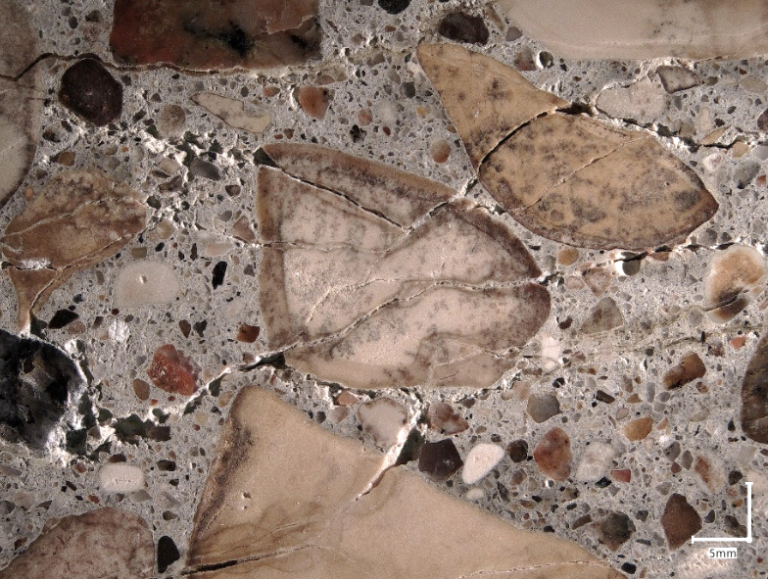Concrete Petrography
Contact Us
When concrete issues develop, either during construction or later in the structure’s service life, petrographic examination is one of the most useful techniques to determine the underlying cause(s). Petrographic examination uses transmitted, reflective, and polarized light microscopy. In addition, other instrumentation and analytical techniques may also be used. These include X-Ray Diffraction (XRD), X-Ray Fluorescence (XRF), Fourier-Transformed Infrared (FTIR) and various other chemical methods. Depending on the complexity of the project, a high-powered microscope such as the Scanning Electron Microscope (SEM) may also be used. These tools help determine the cause(s) of concrete distress and provide an understanding of material properties and how they can impact performance.
At Braun Intertec, we have the personnel, equipment, and expertise to help with your concrete issues.
We can help to identify the root cause of your problems. We can also identify foreign materials, or simply determine the general quality of the concrete.
Concrete distress can be related to physical or chemical attacks on concrete. Determining the root cause of an issue observed in the field is the primary reason for conducting petrographic examination on concrete samples. We use petrography to investigate several concrete issues, including:
- Cause(s) of surface defects such as: scaling, popouts, cracking, delamination, and dusting
- Identifying reactive aggregates and various aggregate issues such as: Alkali-Silica Reaction (ASR), Alkali-Carbonate Reaction (ACR), sulfate attack from pyrrhotite, high clay content from fine aggregate
- Determining air-void content and parameters of the air-void system
- Estimating water-to-cement(itious) ratio
- Investigating for the presence of mineral admixtures or pozzolans, and estimating relative percentage of cementitious materials
- Cause(s) of low strengths
- Extent of fire damage
- Freeze-thaw or frost damage
- Chemical attack
- Identifying efflorescence and secondary deposits
- Identifying penetrating sealers and overlay systems
- Identifying of potential contaminants
Below are some of the ASTM standards that we commonly perform in the petrography lab:


